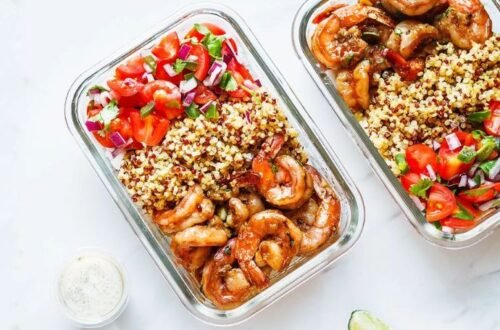Why Tracking My Macros Changed the Way I Eat
For a long time, I thought that “eating healthy” meant not eating much. I would cut out whole food groups, calculate every calorie, and stick to strict diet guidelines that made me feel miserable and restricted. There was no in-between for me; I was either “on” a diet or “off” it. Food and I were always at odds, and to be honest, I was losing. I was exercising, but I wasn’t getting the results I wanted, and I was exhausted and angry.
Then I learned about two things that changed everything for me: tracking my macros and intermittent fasting. They are both quite useful on their own. But when I put them together, they had a synergistic impact that changed not only my body but also the way I thought about eating. Tracking macros showed me what to eat, and intermittent fasting showed me when to eat.
This wasn’t just another crash diet. It was a change in my way of life that I could stick with that finally offered me the control and freedom I had been looking for. If you’re locked in a cycle of dieting and disappointment, I want to tell you my story and the actions that helped me finally break free from food and reach my fitness objectives.

The “What”: Understanding and Tracking Macros
Before this trip, I thought “macros” were something that only bodybuilders talked about. But the idea is so easy to understand. “Macros” is short for macronutrients, which are the three primary types of nutrition your body requires to work:
- Proteins: The building blocks for muscle, tissue, and enzymes.
- Carbohydrates: Your body’s primary source of energy.
- Fats: Essential for hormone production, brain health, and nutrient absorption.
It’s not enough to merely count calories when you track macros; you also need to know what kind of calories they are. I could consume 1,500 calories of junk food or 1,500 calories of healthy, balanced meals. The second choice gives you energy, builds muscle, and keeps you full.
My “Aha!” Moment with Macros
I was astonished when I initially started tracking. I believed I was getting enough protein, but I wasn’t even close. My diet was mostly made up of carbs and lipids, which is why I often felt hungry an hour after eating and why my muscles took so long to heal.
I started keeping track of everything I ate with a simple app on my phone. It was like turning on a light in a room that was dark. I could see exactly where I could make modest tweaks that would work. I didn’t have to cut out carbs or fats; I only had to pay more attention to how much protein I ate. I started eating Greek yogurt instead of a bagel for breakfast and adding chicken or lentils to my lunch salad. There was a clear difference right away. I had more energy, my cravings went down, and I felt fuller after every meal.

The “When”: Integrating Intermittent Fasting
Tracking macros helped me figure out what to eat, but I still felt like I was always thinking about food. Intermittent fasting (IF) came into play there. Intermittent fasting isn’t a diet; it’s a way of eating. It goes through cycles of eating and not eating on purpose.
There are a lot of ways to accomplish it, but the 16:8 technique is the most popular and simple way to start. You have to fast for 16 hours a day and consume all your meals in an 8-hour window. For me, this just meant that I had to finish dinner by 8 p.m. and not eat again until noon the next day. It wasn’t as scary as it sounds because I was already asleep for around 8 of those 16 hours.

The Unexpected Benefits of Fasting
I wasn’t sure if it would work at first because I was concerned I’d be hungry and weak. At first, it was hard because my body had to get acclimated to it, but soon I started to see great results:
- Mental Clarity: In the past, I used to think about breakfast in the morning, but now it’s my most productive hours. I felt brighter and more focused without the weight of a meal on my stomach.
- Reduced Cravings: In the past, I used to think about breakfast in the morning, but now it’s my most productive hours. I felt brighter and more focused without the weight of a meal on my stomach.
- Improved Digestion: Taking a break from eating for 16 hours every day made me feel less full and more awake.
Scientists have shown that intermittent fasting can help people maintain their weight, make cells more responsive to insulin, and help cells repair themselves (a process called autophagy). It made things easy for me and helped me meet my macro targets with almost no effort.

How Macros and Intermittent Fasting Work Together
This is where the true magic happened. The two plans worked well together.
- Intermittent fasting made tracking macros easier. It was easy and quick to keep track of what I ate because I had only two main meals and possibly one snack within my eight-hour span. I didn’t want to keep track of six small meals every day.
- Tracking macros made intermittent fasting more effective. I was really full after the meals I did eat since I was focused on reaching my protein objectives. I wasn’t just “fasting”; I was breaking my fast with healthy, filling food that kept me satisfied and energized for hours. This kept people from feeling “hangry,” which is something a lot of people are afraid of when they fast.
This is how my average day would start: I would wake up, drink water and black coffee, and get to work on my morning tasks. I would break my fast at noon with a substantial lunch full of protein, like a big chicken salad or a burrito bowl. After my workout, I might take a protein smoothie or Greek yogurt a few hours later. Then, before 8 p.m., I would have a healthy supper with my family that included a good mix of protein, carbs, and fats. It didn’t feel like it was going to be hard to keep up.

How to Get Started
If you’re curious about trying this, here’s my advice for starting slow:
- Start with Macro Awareness: Just use an app like MyFitnessPal or Cronometer to keep track of what you eat for a few days before you make any changes. Don’t judge it; just watch. This information is where you should start.
- Focus on Protein First: Set a basic goal to eat more protein after you know what your baseline is. Try to eat a protein source that is around the size of your hand at every meal.
- Ease into Intermittent Fasting: Don’t start a 16-hour fast right away. You may start with a 12-hour fast, such as from 8 p.m. to 8 a.m. Once that feels simple, add an hour to it, then another hour, and so on, until you find a time that works for you.
- Listen to Your Body: This is the most crucial rule. You might be hungrier on some days than others. There will be days when a 16-hour fast feels amazing and days when it doesn’t. Not perfection, but constancy is the goal.

A New Relationship with Food
Combining macro tracking with intermittent fasting was the key to my new level of wellness. It taught me how to feed my body on purpose, not just because I was feeling bad. I stopped thinking of food as the adversary and started thinking of it as a powerful way to construct the life and body I wanted. It offered me the framework I needed to be consistent and the freedom I needed to be a person.
I really think you should try these tactics if you’re ready to halt the never-ending cycle of dieting and make a healthy lifestyle that lasts.
Ready to change the way you eat? Start by simply tracking your food for three days this week. You might be surprised by what you learn!






